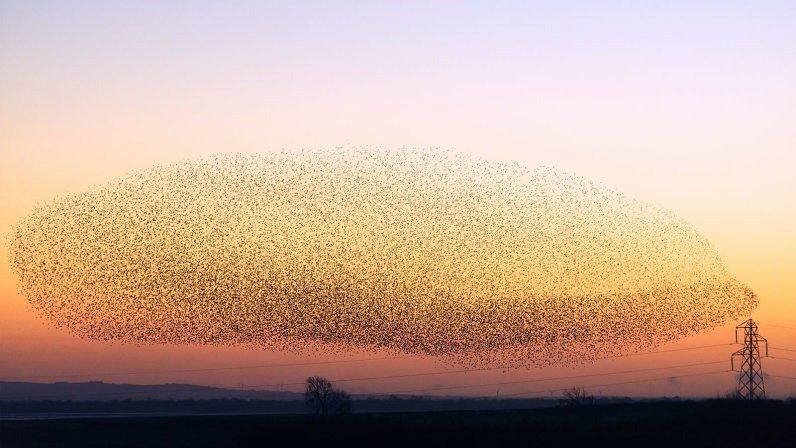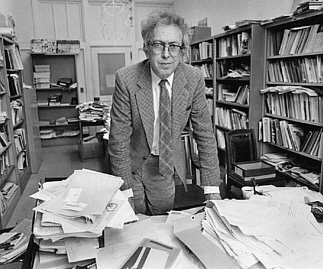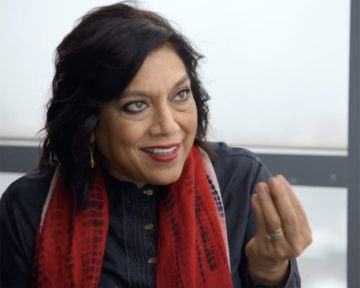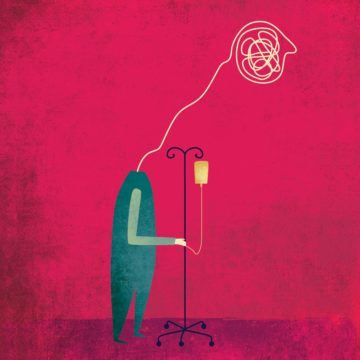Category: Recommended Reading
Robert Reich: To reverse inequality, we need to expose the myth of the ‘free market’
Robert Reich in The Guardian:
 How have a relative handful of billionaires – whose vast fortunes have soared even during the pandemic – convinced the vast majority of the public that their wealth shouldn’t be taxed in order to support the common good?
How have a relative handful of billionaires – whose vast fortunes have soared even during the pandemic – convinced the vast majority of the public that their wealth shouldn’t be taxed in order to support the common good?
They have employed one of the oldest methods used by the wealthy to maintain wealth and power – a belief system that portrays wealth and power in the hands of a few as natural and inevitable.
Centuries ago it was the so-called “divine right of kings”. King James I of England and France’s Louis XIV, among other monarchs, asserted that kings received their authority from God and were therefore not accountable to their earthly subjects. The doctrine ended with England’s Glorious Revolution of the 17th century and the American and French revolutions of the 18th.
Its modern equivalent might be termed “market fundamentalism”, a creed that has been promoted by today’s super rich with no less zeal than the old aristocracy advanced divine right. It holds that what you’re paid is simply a measure of what you’re worth in the market.
More here.
Aldo Tambellini’s BLACK IS (1965)
The Secret History of T. S. Eliot’s Muse
Michelle Taylor at The New Yorker:
 Most readers know Eliot as the arch-impersonal poet, who bewildered the world with “The Waste Land” and proclaimed that “poetry is not a turning loose of emotion, but an escape from emotion.” Readers of this Eliot might, at first, have difficulty recognizing the gushy, hyperbolic admirer who signed his letters to Hale as “Tom.” In many of the letters, he described Hale as a kind of divinity, or at least nobility: “my Dove,” “my paragon”; his “one Fixed Point in this world.” Yet Eliot’s grandiloquent devotion can also sound like a kind of escape from certain messy feelings—the turmoil of his marriage, his uncertainty about his career—into something closer to what he sometimes called an “art emotion,” an impersonal, transcendent feeling. In his famous 1919 essay, “Tradition and the Individual Talent,” Eliot wrote, “The progress of an artist is a continual self-sacrifice, a continual extinction of personality.” In 1936, when Hale had at last returned his affection, Eliot marvelled to find himself engaged in a “perpetual daily surrender” to Hale, “and yet at the same time . . . to something bigger than either ‘me’ or ‘you’ – to something that only you and I together can look at.” Something, perhaps, like a poem.
Most readers know Eliot as the arch-impersonal poet, who bewildered the world with “The Waste Land” and proclaimed that “poetry is not a turning loose of emotion, but an escape from emotion.” Readers of this Eliot might, at first, have difficulty recognizing the gushy, hyperbolic admirer who signed his letters to Hale as “Tom.” In many of the letters, he described Hale as a kind of divinity, or at least nobility: “my Dove,” “my paragon”; his “one Fixed Point in this world.” Yet Eliot’s grandiloquent devotion can also sound like a kind of escape from certain messy feelings—the turmoil of his marriage, his uncertainty about his career—into something closer to what he sometimes called an “art emotion,” an impersonal, transcendent feeling. In his famous 1919 essay, “Tradition and the Individual Talent,” Eliot wrote, “The progress of an artist is a continual self-sacrifice, a continual extinction of personality.” In 1936, when Hale had at last returned his affection, Eliot marvelled to find himself engaged in a “perpetual daily surrender” to Hale, “and yet at the same time . . . to something bigger than either ‘me’ or ‘you’ – to something that only you and I together can look at.” Something, perhaps, like a poem.
more here.
Remembering Chuck Yeager, a Pilot with the Right Stuff
Bob van der Linden in Smithsonian:
 The greatest pilot of the greatest generation has passed. Seventy-nine years to the day after the attack on Pearl Harbor, famed test pilot, World War II ace, and the first person to fly faster than the speed of sound, Brig. Gen. Charles “Chuck” Yeager, died at the age of 97.
The greatest pilot of the greatest generation has passed. Seventy-nine years to the day after the attack on Pearl Harbor, famed test pilot, World War II ace, and the first person to fly faster than the speed of sound, Brig. Gen. Charles “Chuck” Yeager, died at the age of 97.
On October 14, 1947, Yeager forever shattered the myth of the so-called “sound barrier” when he piloted his Bell X-1 Glamorous Glennis to 700 miles per hour (Mach 1.06) 43,000 feet above the southern California desert. The X-1 program contributed greatly to the understanding of the challenges of transonic and supersonic flight. Of great significance to the security and prosperity of the country, these lessons were directly applied to the next generation of military and commercial aircraft, keeping America in the forefront of aeronautical research.
More here.
What We Know of Sappho
Judith Schalansky at The Paris Review:

There are not many surviving literary works older than the songs of Sappho: the down-to-earth Epic of Gilgamesh, the first ethereal hymns of the Rigveda, the inexhaustible epic poems of Homer and the many-stranded myths of Hesiod, in which it is written that the Muses know everything. “They know all that has been, is, and will be.” Their father is Zeus, their mother Mnemosyne, a titaness, the goddess of memory.
We know nothing. Not much, at any rate. Not even whether Homer really existed, or the identity of that author whom we for the sake of convenience have dubbed “Pseudo-Longinus,” who quotes Sappho’s verses on the power of Eros in the surviving fragments of his work on the sublime, thereby preserving her lines for future generations, namely us.
more here.
Take a Break From the Doom and Look at These Rad Starlings
Jody Serrano in Gizmodo:

Although your first instinct when you see these photos might be, “Oh god,” we promise that it’s not an upcoming extreme weather event or some alien species coming to invade Earth. (Given that it’s 2020, you’re forgiven for thinking anything that’s not obviously good is probably horrific.) In fact, these are actually photos taken this week of a starling murmuration in Scotland.
More here.
Wednesday Poem
Flee fro the pres, and duelle with sothfastnesse;
Suffyce unto thy good, though hit be small…
…………. Chaucer, ‘Balade de bon conseyl’
A Standing Ground
However just and anxious I have been
I will stop and step back
from the crowd of those who may agree
with what I say, and be apart.
There is no earthly promise of life or peace
but where the roots branch and weave
their patient silent passages in the dark;
uprooted, I have been furious without an aim.
I am not bound for any public place,
but for ground of my own
where I have planted vines and orchard trees,
and in the heat of the day climbed up
into the healing shadow of the woods.
Better than any argument is to rise at dawn
and pick dew-wet berries in a cup.
by Wendell Berry
from Farming a Handbook
Tuesday, December 8, 2020
What Are the Humanities? Why Are They Worth Saving?
Justin E. H. Smith in his Substack Newsletter:
 This much is all true: I believe that “quality television” is in fact of extremely low quality, that “YA literature” is not literature, that “OA literature” as it were looks more and more like YA with each passing year, that superhero movies are of course not cinema and that no self-respecting adult should ever watch them, except perhaps as an expression of love to some li’l tyke in their lives. If we were living in a culture dominated by grown-ups, Martin Scorsese would be considered the purveyor of middle-brow forgettable fare rather than the gold standard of sophistication, and at least the childless among us would not even have to be aware of Spider-Man’s existence.
This much is all true: I believe that “quality television” is in fact of extremely low quality, that “YA literature” is not literature, that “OA literature” as it were looks more and more like YA with each passing year, that superhero movies are of course not cinema and that no self-respecting adult should ever watch them, except perhaps as an expression of love to some li’l tyke in their lives. If we were living in a culture dominated by grown-ups, Martin Scorsese would be considered the purveyor of middle-brow forgettable fare rather than the gold standard of sophistication, and at least the childless among us would not even have to be aware of Spider-Man’s existence.
Somehow these commitments make me a crypto-reactionary for a whole generation of thirty-somethings with Ph.D.s and with anime avatars on their social-media accounts, even though my principal frame of analysis whenever I discuss these cultural phenomena remains Marxist through and through: they are opium for the masses, churned out by rapacious mega-corporations that do not care about society or about art. Yet in the current climate, for reasons I will never understand, to share 10% of one’s views with the political right is to invite constant entreaties and attempted seductions from the right, while to share 90% of one’s views with the left is to invite categorical ostracism from the left for not being able to get on board for that remaining 10% — even when that remaining 10% concerns “superstructural” questions of art and sensibility, and has nothing to do with fundamental questions of economic justice.
I was brutally reminded of all of this when, last week, the Chronicle of Higher Education picked up and ran a version of my most recent public ‘stack concerning, among other things, the near-total collapse of the academic humanities over the past few decades.
More here.
To Tell or Not to Tell
Greg Gerke in the Los Angeles Review of Books:

I only realized I’d been looking for something over some years when I finally found it in an obscure archived page of The Washington Post from February 1985. Hugh Kenner’s review of Gilbert Sorrentino’s essay book Something Said. The two lines are tucked away in the middle:
Page after page and instance after instance, Sorrentino wrestles with the same radical misunderstanding: that fiction and poetry are valuable for what they “tell” us. To rebut that without seeming to exalt empty “style” can be the hardest expository labor in the world.
I must have needed an answer I could fit into a tweet and then brazenly not tweet, owing to a pre-internet-birthed monkish streak. Still, the answer had to be small to be sustained (and certainly pithy) and Kenner provided it — an answer to what has gone awry in literature locally and in most other English-speaking countries — films, too.
More here.
A conversation with Noam Chomsky on the future of democracy, nuclear threat and the looming environmental catastrophe
Sean Carroll’s Mindscape Podcast: David Stasavage on the Origin and History of Democracy
Sean Carroll in Preposterous Universe:
 Those of us living in democracies tend to take the idea for granted. We forget what an audacious, radical idea it is to put government power into the hands of literally all of the citizens of a country. Where did such an idea come from, and where is it going? Political scientist David Stasavage has written an ambitious history of democracy worldwide, in which he makes a number of unconventional points. The roots of democracy go much further back than we often think; the idea wasn’t invented in Athens, but can be found in a large number of ancient societies. And the resurgence of democracy in Europe wasn’t because that continent was especially advanced, but precisely the opposite. These insights have implications for what the future of democracy has in store.
Those of us living in democracies tend to take the idea for granted. We forget what an audacious, radical idea it is to put government power into the hands of literally all of the citizens of a country. Where did such an idea come from, and where is it going? Political scientist David Stasavage has written an ambitious history of democracy worldwide, in which he makes a number of unconventional points. The roots of democracy go much further back than we often think; the idea wasn’t invented in Athens, but can be found in a large number of ancient societies. And the resurgence of democracy in Europe wasn’t because that continent was especially advanced, but precisely the opposite. These insights have implications for what the future of democracy has in store.
More here.
The Stay At Home Museum: Bruegel
App: Ovia Pregnancy Tracker
Kea Krause at The Believer:
![]() At twenty-seven weeks, my baby was a sweet potato—and also a croissant, a slingshot, and a sugar glider. At thirty-one weeks, she was a head of romaine lettuce, a croquembouche, a foam finger, and a small-clawed otter. There were inconsistencies. At twenty-four weeks, she was the size of an Atlantic puffin but also a GI Joe, which I’d thought was very small. The bakery item that week was a demi-baguette, which further complicated things, as a baguette is long and skinny, unlike a rotund Arctic bird. Later, I realized I had confused the GI Joe with a toy soldier. (I myself had been a Teenage Mutant Ninja Turtles girl in childhood.) Some weeks I tried to average out the animal, vegetable, toy, and bread and come up with my own Jabberwocky: a puffin with baguette legs and a GI Joe head.
At twenty-seven weeks, my baby was a sweet potato—and also a croissant, a slingshot, and a sugar glider. At thirty-one weeks, she was a head of romaine lettuce, a croquembouche, a foam finger, and a small-clawed otter. There were inconsistencies. At twenty-four weeks, she was the size of an Atlantic puffin but also a GI Joe, which I’d thought was very small. The bakery item that week was a demi-baguette, which further complicated things, as a baguette is long and skinny, unlike a rotund Arctic bird. Later, I realized I had confused the GI Joe with a toy soldier. (I myself had been a Teenage Mutant Ninja Turtles girl in childhood.) Some weeks I tried to average out the animal, vegetable, toy, and bread and come up with my own Jabberwocky: a puffin with baguette legs and a GI Joe head.
more here.
Bruegel as Cinema
Jackson Arn at Art in America:
 BRUEGEL SEEMS LIKE A BETTER FIT for a certain type of film than for poetry. His indiscriminate eye; his contempt for obvious “takeaways”; his wide, lucid images withholding judgment—in all these ways, he anticipates the “slow cinema” of the last few decades. It seems appropriate that director Andrei Tarkovsky, a pivotal figure in the flourishing of this kind of cinema, should be the first major filmmaker to put Hunters to work onscreen.
BRUEGEL SEEMS LIKE A BETTER FIT for a certain type of film than for poetry. His indiscriminate eye; his contempt for obvious “takeaways”; his wide, lucid images withholding judgment—in all these ways, he anticipates the “slow cinema” of the last few decades. It seems appropriate that director Andrei Tarkovsky, a pivotal figure in the flourishing of this kind of cinema, should be the first major filmmaker to put Hunters to work onscreen.
Tarkovsky left behind two unmistakable Hunters homages, one a long, aching look at the image and the other a bizarre, fractured tableau vivant. Even if he’d shot neither, people would compare his work to Bruegel’s. Andrei Rublev (1966) opens with one of the most Bruegel-esque scenes ever filmed: medieval peasants build a hot air balloon, launch it with one of their number tied beneath, and hoot with delight as he floats off over the countryside before crashing Icarus-like to earth. The scene ends with a zoom shot of the ground—Tarkovsky, like Bruegel, is always looking down at his figures, so that they don’t seem to reach up to the heavens so much as sink into the mud.
more here.
How Mira Nair Made Her Own “Suitable Boy”
Isaac Chotiner in The New Yorker:
 This month marks the American release of the director Mira Nair’s six-part television adaptation of “A Suitable Boy,” Vikram Seth’s beloved, kaleidoscopic novel of early post-Partition India, from 1993. (It began streaming on Acorn TV on December 7th.) The book, which, at more than thirteen hundred pages, is longer than “War and Peace,” tells the story of a young woman, Lata, and her search for a husband, while also featuring a remarkable cast of characters, largely from four interwoven families. The novel also touches on land reform, cricket, and religious tension, in playful, inventive language and sometimes with laugh-out-loud humor. Seth reportedly has been working on a sequel for more than a decade, the rumors of which have thrilled his fans.
This month marks the American release of the director Mira Nair’s six-part television adaptation of “A Suitable Boy,” Vikram Seth’s beloved, kaleidoscopic novel of early post-Partition India, from 1993. (It began streaming on Acorn TV on December 7th.) The book, which, at more than thirteen hundred pages, is longer than “War and Peace,” tells the story of a young woman, Lata, and her search for a husband, while also featuring a remarkable cast of characters, largely from four interwoven families. The novel also touches on land reform, cricket, and religious tension, in playful, inventive language and sometimes with laugh-out-loud humor. Seth reportedly has been working on a sequel for more than a decade, the rumors of which have thrilled his fans.
Nair, who was born in 1957 in the Indian state of Odisha (then called Orissa), and has been based in New York for about four decades, was an obvious choice for the adaptation. In 1988, she directed “Salaam Bombay!,” a critically acclaimed account of life in the slums of Mumbai. She followed it up with an early Denzel Washington drama, “Mississippi Masala,” about an Indian from Uganda in the American South. Since then, Nair has made ten feature films, including “Monsoon Wedding,” from 2001, and has become known as one of the preëminent interpreters of the Indian-immigrant experience. Nair has also adapted classic novels, including “Vanity Fair,” and several pieces of modern literature, such as Jhumpa Lahiri’s “The Namesake” and Mohsin Hamid’s “The Reluctant Fundamentalist.” In a Profile of Nair, in 2002, John Lahr wrote, “Nair’s films negotiate disparate ethnic geographies with the same kind of sly civility she practices in life. Her approach is sometimes oblique: she doesn’t make political films, but she does make her films politically. Her gift, to which ‘Monsoon Wedding’ attests, is to make diversity irresistible.”
Nair and I recently spoke over Zoom, while she was completing work on the last episode of the series. During our conversation, which has been edited for length and clarity, we discussed her career as a filmmaker, the challenges of adapting an epic novel, and how rising intolerance in India, led by the Hindu-nationalist Bharatiya Janata Party, affected her work on “A Suitable Boy.” After our interview, it was reported that members of the B.J.P. called for an investigation of Netflix, the series’ Indian distributor, claiming that the depiction of a kiss between a Muslim man and Hindu woman intentionally affronts religious sentiments, which in India is a criminal offense. Netflix has made no public comment, and Nair declined to address the complaint.
More here.
Could COVID delirium bring on dementia?
Carrie Arnold in Nature:
 In her job as a physician at the Boston Medical Center in Massachusetts, Sondra Crosby treated some of the first people in her region to get COVID-19. So when she began feeling sick in April, Crosby wasn’t surprised to learn that she, too, had been infected. At first, her symptoms felt like those of a bad cold, but by the next day, she was too sick to get out of bed. She struggled to eat and depended on her husband to bring her sports drinks and fever-reducing medicine. Then she lost track of time completely.
In her job as a physician at the Boston Medical Center in Massachusetts, Sondra Crosby treated some of the first people in her region to get COVID-19. So when she began feeling sick in April, Crosby wasn’t surprised to learn that she, too, had been infected. At first, her symptoms felt like those of a bad cold, but by the next day, she was too sick to get out of bed. She struggled to eat and depended on her husband to bring her sports drinks and fever-reducing medicine. Then she lost track of time completely.
For five days, Crosby lay in a confused haze, unable to remember the simplest things, such as how to turn on her phone or what her address was. She began hallucinating, seeing lizards on her walls and smelling a repugnant reptilian odour. Only later did Crosby realize that she had had delirium, the formal medical term for her abrupt, severe disorientation. “I didn’t really start processing it until later when I started to come out of it,” she says. “I didn’t have the presence of mind to think that I was anything more than just sick and dehydrated.”
Physicians treating people hospitalized with COVID-19 report that a large number experience delirium, and that the condition disproportionately affects older adults. An April 2020 study in Strasbourg, France, found that 65% of people who were severely ill with coronavirus had acute confusion — a symptom of delirium1. Data presented last month at the annual meeting of the American College of Chest Physicians by scientists at the Vanderbilt University Medical Center in Nashville, Tennessee, showed that 55% of the 2,000 people they tracked who were treated for COVID-19 in intensive-care units (ICUs) around the world had developed delirium. These numbers are much higher than doctors are used to: usually, about one-third of people who are critically ill develop delirium, according to a 2015 meta-analysis2 (see ‘How common is delirium?’).
More here.
Tuesday Poem
Woman Unborn
I am not born as yet,
five minutes before my birth.
I can still go back
into my unbirth.
Now it’s ten minutes before,
now, it’s one hour before birth.
I go back,
I run
into my minus life.
I walk through my unbirth as in a tunnel
with bizarre perspectives.
Ten years before,
a hundred and fifty years before,
I walk, my steps thump,
a fantastic journey through epochs
in which there was no me.
How long is my minus life,
nonexistence so much resembles immortality.
Here is Romanticism, where I could have been a spinster,
Here is the Renaissance, where I would have been
an ugly and unloved wife of an evil husband,
The Middle Ages, where I would have carried water in a tavern.
I walk still further,
what an echo,
my steps thump
through my minus life,
through the reverse of life.
I reach Adam and Eve,
nothing is seen anymore, it’s dark.
Now my nonexistence dies already
with the trite death of mathematical fiction.
As trite as the death of my existence would have been
had I been really born.
by Anna Swir
from Talking to My Body,1996
Copper Canyon Press
translated by Czeslaw Milosz and Leonard Nathan.
Sunday, December 6, 2020
Torturing Geniuses
Agnes Callard in The Point:
 Beth, the protagonist of the TV show The Queen’s Gambit, is not someone you’d want as a friend. She takes money from her childhood mentor—the old janitor who taught her chess—and never pays him back, visits him or thanks him for launching her career. She treats the young men who help her improve—a group that eventually coalesces into a supportive entourage—in a similarly instrumental way. She is so focused on winning tournaments that she can barely spare a word of caution when her adoptive mother is falling into a fatal alcoholic spiral. When she loses, she is petulant and childish, unlike her opponents, who are graceful and kind. She is cruel and manipulative when—as an adult—she plays against a talented Russian child, softening to him only after she has beaten him.
Beth, the protagonist of the TV show The Queen’s Gambit, is not someone you’d want as a friend. She takes money from her childhood mentor—the old janitor who taught her chess—and never pays him back, visits him or thanks him for launching her career. She treats the young men who help her improve—a group that eventually coalesces into a supportive entourage—in a similarly instrumental way. She is so focused on winning tournaments that she can barely spare a word of caution when her adoptive mother is falling into a fatal alcoholic spiral. When she loses, she is petulant and childish, unlike her opponents, who are graceful and kind. She is cruel and manipulative when—as an adult—she plays against a talented Russian child, softening to him only after she has beaten him.
Beth doesn’t seem to love anyone, but viewers love her anyways, admiring the sheer force of her genius. It doesn’t matter that most viewers don’t play chess. The chess scenes focus our attention on her striking, wide-set eyes, her perfect figure and her manicured fingernails, as though gawking at her body were a symbolic way of appreciating some mysterious power in her brain. We are clued in to her genius by other people saying she is “astonishing,” and by their willingness to put themselves at her service.
In my own field there are also geniuses.
More here.
The Gaia hypothesis states that our biosphere is evolving. Once sceptical, some prominent biologists are beginning to agree
W Ford Doolittle in Aeon:
 The idea that the Earth itself is like a single evolving ‘organism’ was developed in the mid-1970s by the independent English scientist and inventor James Lovelock and the American biologist Lynn Margulis. They dubbed it the ‘Gaia hypothesis’, asserting that the biosphere is an ‘active adaptive control system able to maintain the Earth in homeostasis’. Sometimes they went pretty far with this line of reasoning: Lovelock even ventured that algal mats have evolved so as to control global temperature, while Australia’s Great Barrier Reef might be a ‘partly finished project for an evaporation lagoon’, whose purpose was to control oceanic salinity.
The idea that the Earth itself is like a single evolving ‘organism’ was developed in the mid-1970s by the independent English scientist and inventor James Lovelock and the American biologist Lynn Margulis. They dubbed it the ‘Gaia hypothesis’, asserting that the biosphere is an ‘active adaptive control system able to maintain the Earth in homeostasis’. Sometimes they went pretty far with this line of reasoning: Lovelock even ventured that algal mats have evolved so as to control global temperature, while Australia’s Great Barrier Reef might be a ‘partly finished project for an evaporation lagoon’, whose purpose was to control oceanic salinity.
The notion that the Earth itself is a living system captured the imagination of New Age enthusiasts, who deified Gaia as the Earth Goddess. But it has received rough treatment at the hands of evolutionary biologists like me, and is generally scorned by most scientific Darwinists. Most of them are still negative about Gaia: viewing many Earthly features as biological products might well have been extraordinarily fruitful, generating much good science, but Earth is nothing like an evolved organism. Algal mats and coral reefs are just not ‘adaptations’ that enhance Earth’s ‘fitness’ in the same way that eyes and wings contribute to the fitness of birds. Darwinian natural selection doesn’t work that way.
I’ve got a confession though: I’ve warmed to Gaia over the years.
More here.
